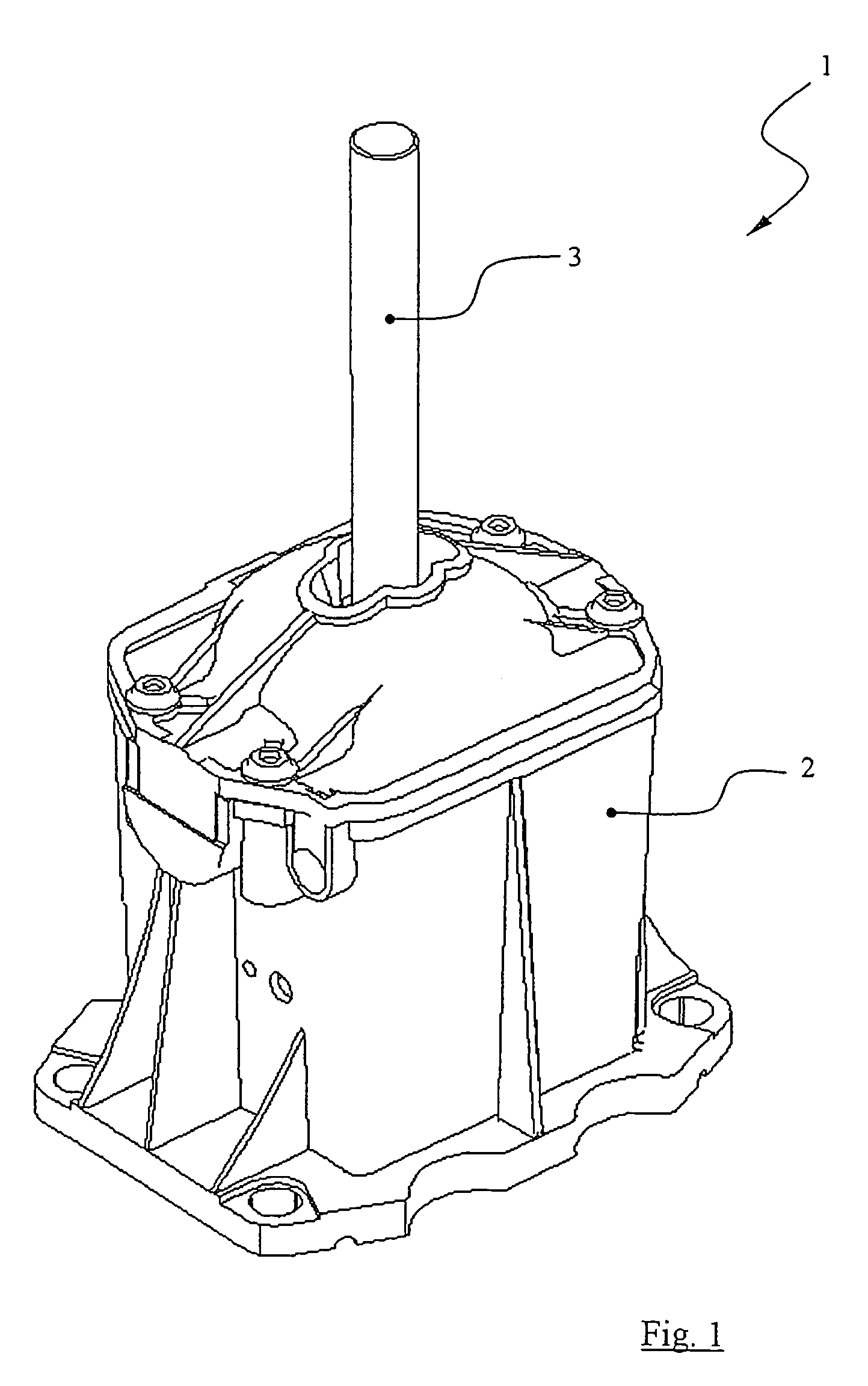Locking device
a technology of locking device and gear shift lever, which is applied in the direction of mechanical control device, process and machine control, instruments, etc., can solve the problems of large installation space, complicated shape of components, and inability to accurately indicate the shift position of gear shift lever, etc., to achieve reliable and uniform, small space, and simple design
- Summary
- Abstract
- Description
- Claims
- Application Information
AI Technical Summary
Benefits of technology
Problems solved by technology
Method used
Image
Examples
Embodiment Construction
[0025]Referring to the drawings in particular, FIGS. 1 and 2 show an exemplary embodiment of a shifting device 1 for actuating a transmission in motor vehicles. A gearshift lever 3 is mounted in a gearshift housing 2 connected rigidly to the vehicle body pivotably about a first pivot axis 5 and a second pivot axis 6 by means of a swivel joint 4. A bracket 7, which is rigidly connected to the gearshift lever 3 and has a one-part design together with the gearshift lever 3 here, in which said gearshift lever a movable pin 8 is arranged, is provided at the lower part of the gearshift lever 3, which said part is located in the gearshift housing 2. Together with a contour 9, which is rigidly connected to the gearshift housing 2, the bracket 7 and the pin 8 form the locking device 10. The contour 9 has a guide groove 11 with a contact surface 12, which is in contact with the pin 8.
[0026]A first exemplary embodiment of the inner design of the locking device 10 is shown in FIGS. 3 and 4. The...
PUM
 Login to View More
Login to View More Abstract
Description
Claims
Application Information
 Login to View More
Login to View More - R&D
- Intellectual Property
- Life Sciences
- Materials
- Tech Scout
- Unparalleled Data Quality
- Higher Quality Content
- 60% Fewer Hallucinations
Browse by: Latest US Patents, China's latest patents, Technical Efficacy Thesaurus, Application Domain, Technology Topic, Popular Technical Reports.
© 2025 PatSnap. All rights reserved.Legal|Privacy policy|Modern Slavery Act Transparency Statement|Sitemap|About US| Contact US: help@patsnap.com



